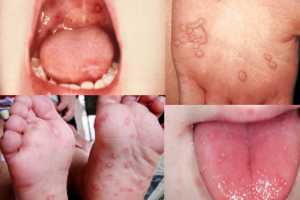Author: Alex Koyfman, MD (@EMHighAK) // Edited by: Brit Long, MD (@long_brit)
This week’s Survival Guide brings you a difficult topic: hematology/oncology. Read on for key resources and commonly tested concepts.
Boards Must-Knows:
1) Blood products: Transfusion reactions most high-yield; sometimes individual components are tested as well. Know presentations / management of: febrile // hemolytic – acute & delayed // TRALI. Know Hgb transfusion threshold and type of blood to give. Know when to transfuse platelets. Know PCC vs FFP. Know who may benefit from cryoprecipitate.
– LIFTL
– WikEM
– FOAMCast Transfusion Reaction
2) DIC: Most common etiology is sepsis. Patients bleed and clot. Know lab findings and contrast with vWD / ITP / TTP. Identify and treat trigger.
– emDocs
– LIFTL
– WikEM
3) Methemoglobinemia: Know classic meds/scenarios. Blue skin, chocolate blood, and oxygen saturation 85% that does not improve with O2 administration. Treat with methylene blue.
– CoreEM
– ToxCard
– WikEM
4) Hemophilia: VIII (A) and IX (B). Know formulas to replace factors for minor and severe bleeding.
– REBEL EM
– WikEM
5) ITP: Know common presentations => petechiae, epistaxis, easy bleeding with brushing teeth, etc. Coagulation panel normal. Treat PRN with steroid, IVIG. Spontaneous serious bleeds when plts < 10,000. Kids recover well; tends to be a chronic disease in adults.
– emDocs
– WikEM
6) HSP: IgA vasculitis. Arthralgias + palpable purpura + kidney involvement. Love to test abdominal pain = intussusception. Typically do well and can be discharged with follow-up.
– EM@3AM
– WikEM
7) Hypercalcemia (malignancy): Know classic presentation. Rate of Ca rise determines symptoms. In ED setting, it’s mostly about hydration; other options as inpatient.
– WikEM
– CoreEM
8) Hyperviscosity syndrome: Think sludging in any organ system, but especially pulmonary and neurologic systems. Need leukapheresis or plasmapheresis / chemotherapy.
– emDocs
– WikEM
9) Microcytic anemia: Know differential diagnosis => Fe deficiency, anemia of chronic disease, thalassemia, sideroblastic anemia. Most common cause of anemia in young/middle-aged female: Fe deficiency.
– LIFTL
– WikEM
10) Macrocytic anemia: Know how to differentiate B12 (neuro symptoms) vs folate deficiency.
– LIFTL
– WikEM, B12 deficiency, folate deficiency








1 thought on “EM Boards Survival Guide: Hematology/Oncology 1”
This was very informative. Thank you Dr. Koyfman.